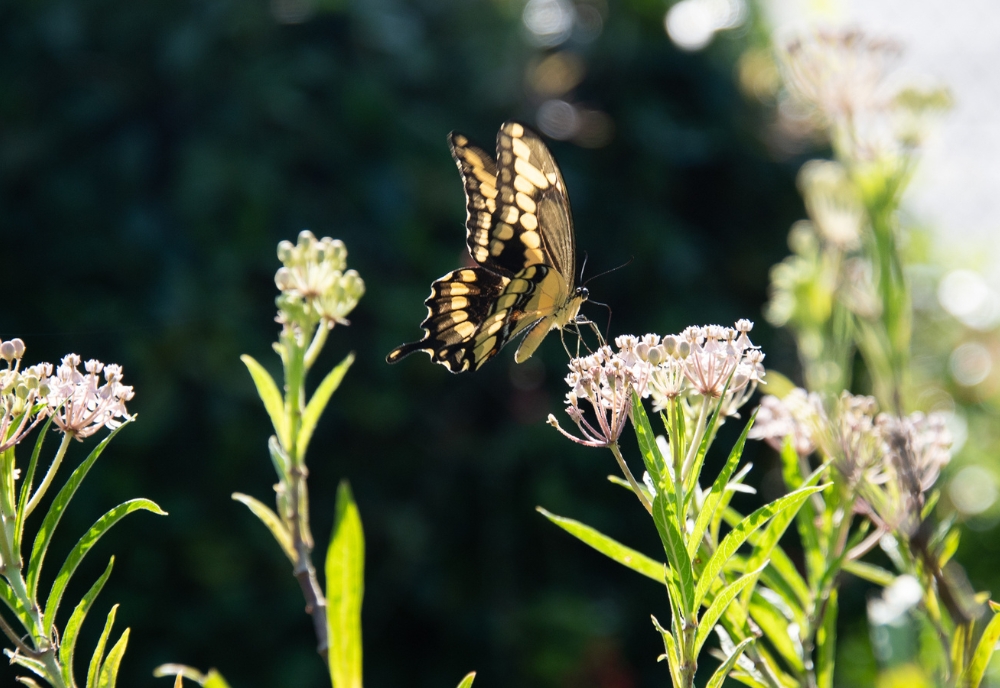Earth Day is April 22
The ECORE System within the USF College of Arts and Sciences manages and promotes the botanical and environmental assets of three green spaces on campus: Forest Preserve, Botanical Gardens, and GeoPark.
“ECORE, standing for Environmental and Conservation Outreach, Research, and Education, serves as a steward to conservation for these lands, deploying a range of land management techniques to preserve the ecological health and biodiversity of Florida’s unique ecosystems,” according to Nicole Brand, director of the Conservation and Greenspaces.
Here are five positive environmental impacts of the ECORE System:
1) The ECORE System supports the growth of key pollinators
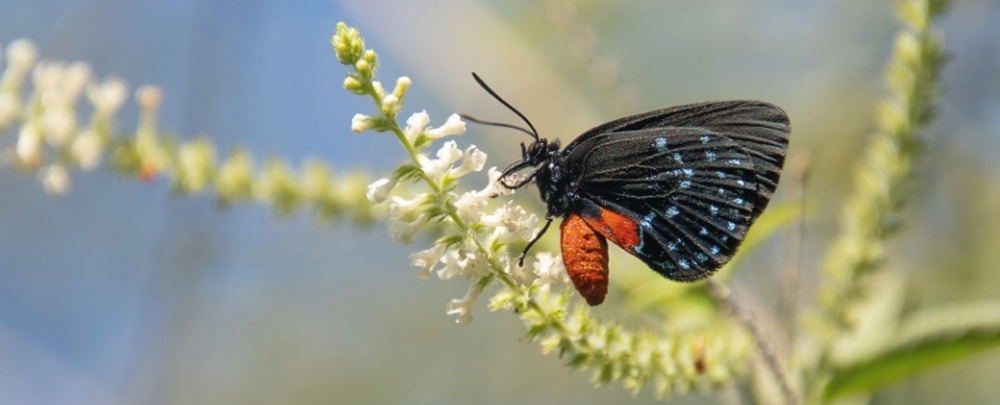
Attala butterfly (Eumaeus atala) in the Botanical Gardens. (Photo by Corey Lepak)
Florida is home to roughly 315 species of native bees, 29 of which are endemic.
“It’s the time of year for the highest nectar flow, which means the European-derived honeybee (Apis mellifera) is busy foraging for nectar to produce honey for the hive. This species' biological drive accounts for the pollination of about 1/3 of global food production,” Brand said.
This season’s honey, Bee Smart, will soon be available for purchase at the Botanical Gardens.
In addition to encouraging bees' growth, the ECORE System properties also serve as a habitat and food source for butterflies such as the Atala butterfly.
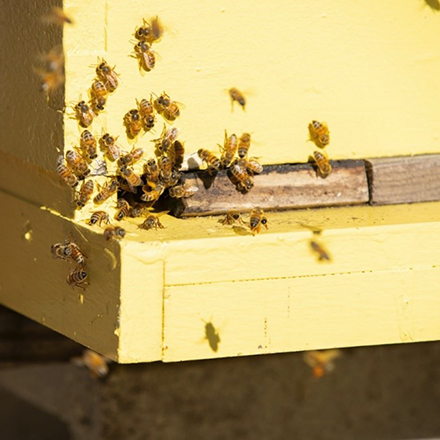
The Botanical Gardens also offers a beekeeping certification course. (Photo by Corey Lepak)
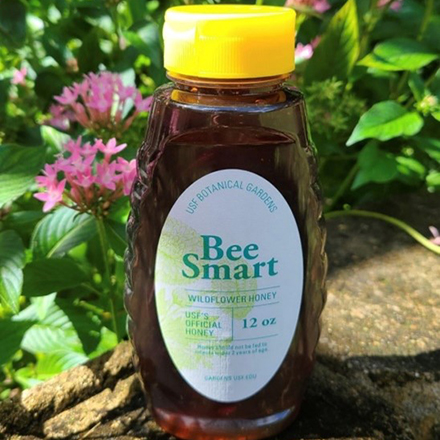
An early design of the USF Apiary ‘Bee Smart’ Honey. (Photo courtesy of Nicole Brand)
According to Botanical Gardens Assistant Director Dr. Craig Huegel, Atala butterflies were never listed as federally endangered because when the Endangered Species Act became law in 1973, Atala butterflies were already “presumed gone forever.”
“The Atala’s story is particularly inspiring because it shows how people can fight back against the factors that are pushing many butterflies to the brink these days, such as climate change, pesticide use and loss of habitat,” he explained.
Thanks to the preservation of habitat in the ECORE System, Atala butterflies can now be spotted all over the gardens.
2) The ECORE System is home to the majority of USF’s trees
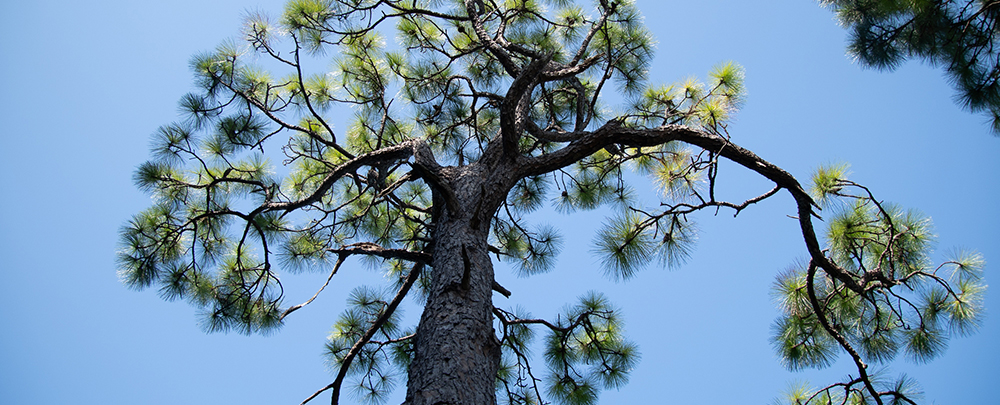
USF has been recognized as a Tree Campus Higher Education for 10 years, with the majority of those trees located within the ECORE System. (Photo by Corey Lepak)
USF celebrated 10 years of recognition as a Tree Campus Higher Education last year. The majority of these trees are what make up the ECORE System.
The Arbor Day Foundation gives this distinction to campuses meeting the five core standards for sustainable campus forestry, including the establishment of a tree advisory committee, creating a campus tree-care plan, specifying dedicated annual expenditures for the campus tree program, holding an Arbor Day event, and sponsoring students in service-learning projects.
The USF Tree Committee, which is comprised of USF faculty, staff, students, and volunteers from the City of Tampa, Hillsborough County, the city of Temple Terrace, Tampa Electric (TECO), and Keep Tampa Bay Beautiful, helps to ensure USF maintains its status as a Tree Campus Higher Education.
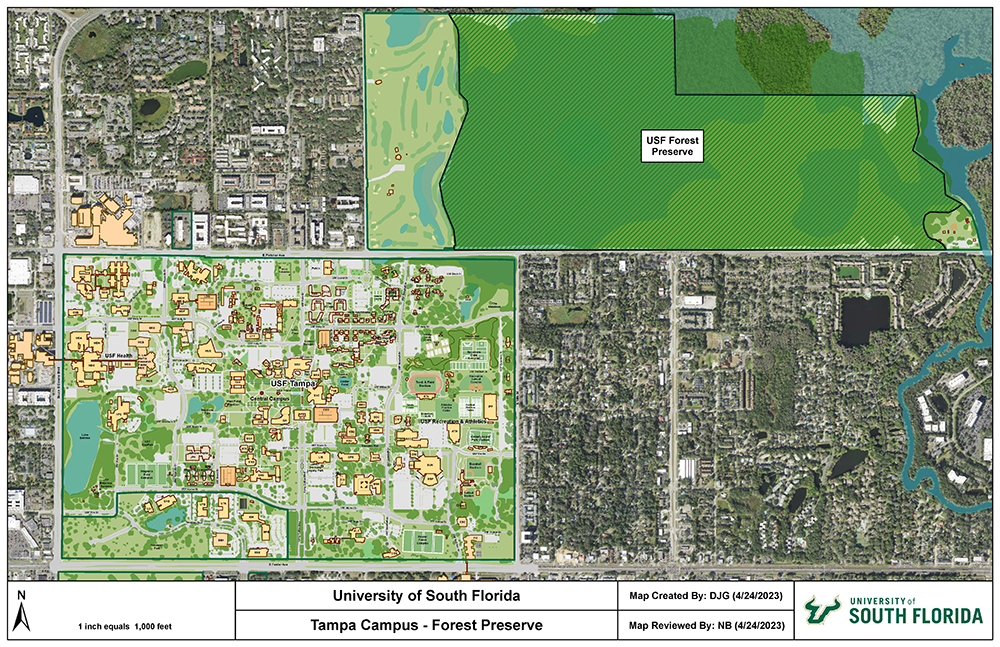
Map showing the green spaces that comprise the ECORE System.
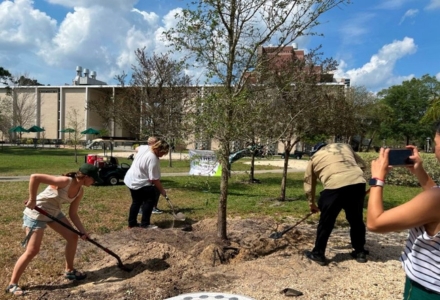
USF Tree Committee members take part in the Arbor Day celebration, planting trees across the USF Tampa campus. (Photo by Michelle Holden)
“The efforts of the [Tree] Committee are based in science. Urban canopies help communities stay cooler, they promote active lifestyles, and exposure to trees is linked to physical and mental restoration,” said Brand.
In 2023, USF celebrated this recognition by planting another 44 trees on the USF Tampa campus.
USF Facilities landscape architect Shuang Hao says the addition of so many trees has made a big difference on campus.
“Over the years we have worked to provide shades, colors, and diversity to the campus in addition to creating a more sustainable campus,” said Hao. “We planted shade trees along sidewalks to block the hot Florida sun, flowering trees at entrances and in the fields to provide colors, and most importantly, we have planted different varieties. All of them provide benefits to in-and-outside of the USF community.”
3) The ECORE System is home to USF’s first ever official prescribed ‘Burn Team’
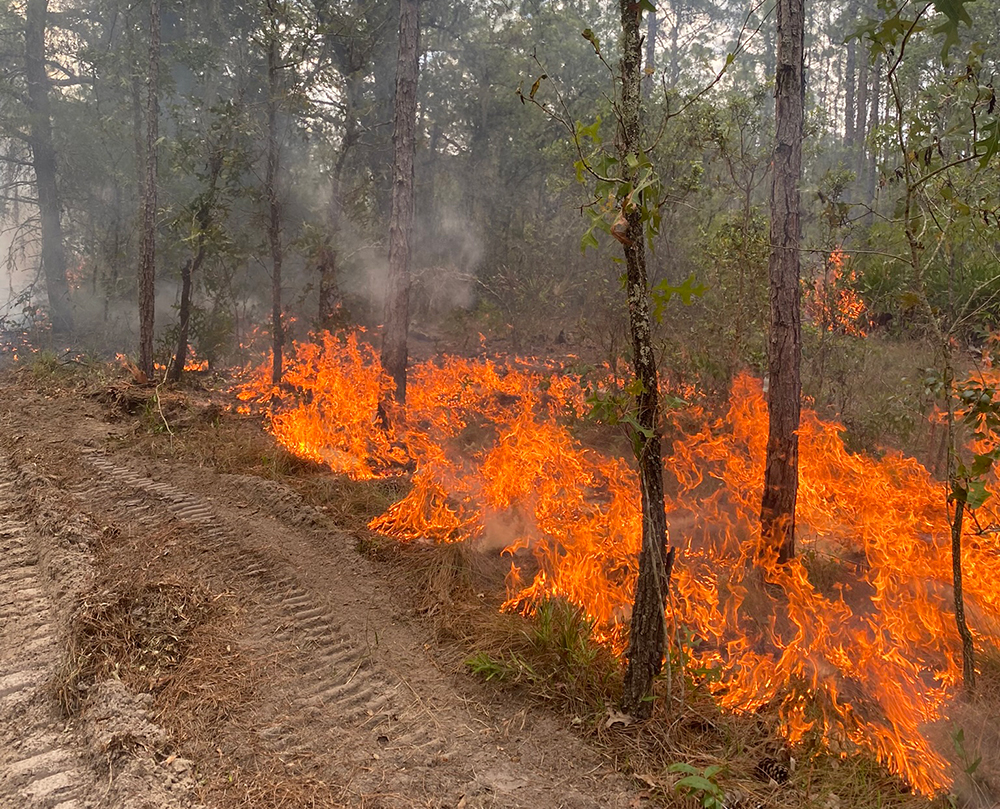
The ECORE System partnered with the Florida Forest Service to burn Unit 4 in the Forest Preserve in June 2023. (Photo courtesy of Nicole Brand)
The ECORE System manages USF’s inaugural “Burn Team,” comprised of USF staff, students and alumni dedicated to promoting the growth of fire-adapted native species through control of woody vegetation.
“Prescribed fires are designed to allow animals to escape,” Brand explained. “A variety of small animals find refuge underground in gopher tortoise burrows. Others take shelter in wetlands or move into the surrounding forest. They return to a healthier environment.”
“Prescribed fire is one of the most versatile and cost-effective tools land managers can use in Florida,” Brand added.

A gopher tortoise is one of the animals that benefits from the prescribed fires. (Photo courtesy of Nicole Brand)
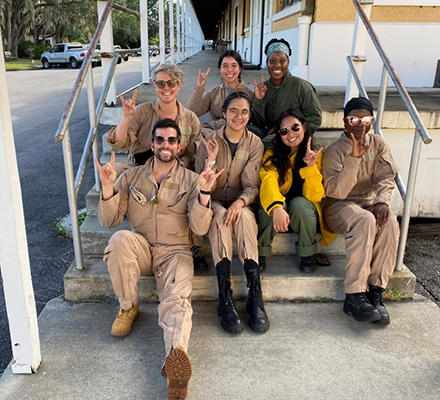
Several members of the USF Burn Team after a training day at Archbold Biological Station. (Photo courtesy of Nicole Brand)
Prescribed fire is used to reduce hazardous fuel buildups, which provides increased protection to people, their homes and the forest.
Other uses include disease control in young pines, wildlife habitat improvement, range management, preservation of endangered plant and animal species and the maintenance of fire-dependent ecosystems like the Florida sandhill.
“We take our prescribed fire seriously,” Brand said. “After decades of irregular prescribed fire, the Forest Preserve now has a designated Prescribed Burn Team. Burning in Florida is governed by Chapter 590, Florida Statutes, and Chapter 5I-2, Florida Administrative Code and we go above and beyond to exceed safety and compliance for prescribed burns in Florida.”
4) USF is brimming with native Florida plants and hosts regular plant festivals
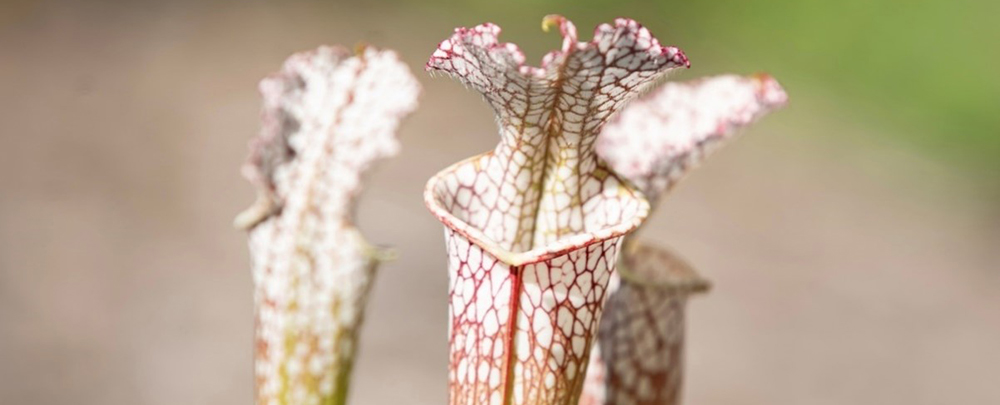
A pitcher plant (Sarracenia leucophylla) in the Florida bog habitat of the Botanical Gardens. (Photo by Corey Lepak)
Established in 1969 and spanning over 16 acres, the Botanical Gardens includes nearly eight acres of natural woodland and another eight acres of planted gardens with a focus on collections native to Florida.
“The Botanical Gardens allows us to teach about the importance of Florida’s native plants, both in nature and in landscaping,” Dr. Craig Huegel, assistant director of the Botanical Gardens, explained.
The gardens officially opened to the public in the 90s and since then has not only been adding to the growth of knowledge for the community, but to the growth of native Florida flowers found on USF’s campus.
“The educational perspective that the gardens provide to the public allows people interested in native gardening to bring their ideas to life and provide a better environment for the world around us,” Huegel explains.
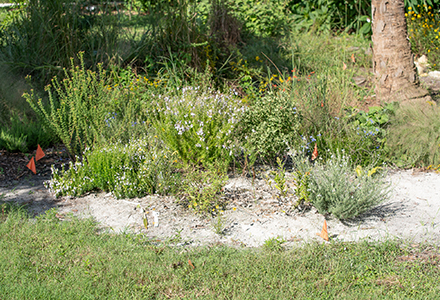
Florida scrub habitat in bloom at the Botanical Gardens. (Photo by Corey Lepak)
Stepping foot in the Botanical Gardens allows individuals to get up close to many native Florida flowers, including liatris, lupine, and sundews, to name a few, 200 species of woody plants—the largest collection of any collected in Florida—and about 100 native grasses and wildflowers call the USF Botanical Gardens home.
“You have to be able to see the plant in the flesh, so to speak, to really be able to understand it. We can study how well it grows here...we can also show people what it looks like if they were to add it to their landscape, and then our educational program can tell them why they should,” he said.
Learn more about visiting the USF Botanical Gardens to view its many native Florida flora, as well as information about its public events, including the upcoming Spring Plant Festival on April 13 and 14.
5) The USF Community Garden provides an experiential learning space around creating a more sustainable food system
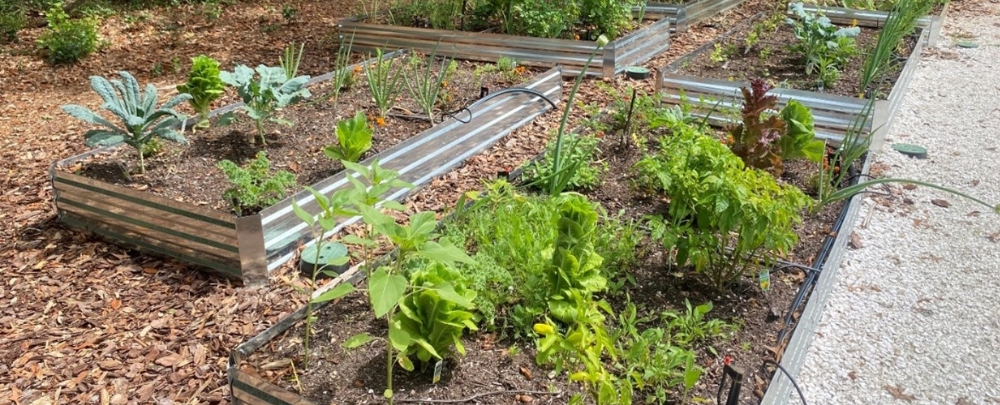
The USF Community Gardens are utilized by numerous classes, student organizations and initiatives. (Photo courtesy of Nicole Brand)
Originally created over a decade ago, the USF Community Garden housed within the Botanical Gardens, is now utilized by multiple classes, student organizations, and initiatives like the Food Sovereignty Initiative led by Dr. William Schanbacher, assistant professor in the Department of Religious Studies.
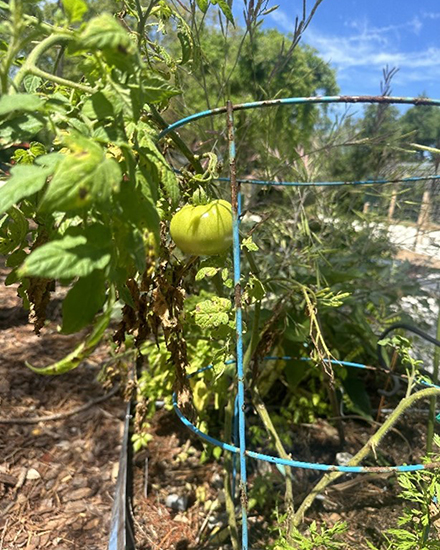
The USF Community Gardens contains a variety of vegetables. (Photo courtesy of Nicole Brand)
“A walk through these gardens will fill your pockets with the tang of Everglades tomatoes, an herb bed touting for all who walk by to taste, and an assortment of intriguing cucumber varieties,” Brand said.
“Last year, we more than doubled the footprint of the Community Garden to meet the demand of use. Now, more than 44 different garden beds and structures are used for research, class, and student purposes,” she added.
Dell De Chant, instructor in the Department of Religious Studies, has maintained a community garden for over a decade as part of his Agrarianism and the Sacred course.
“What we’re not so good at is empowering folks to produce their own food,” De Chant told WUSF. “If we could take a fraction of the amount of resources that’s being poured into trying to resolve food insecurity and devoted it to food sovereignty, the difference that would make would be incredible.”
Learn more about the ECORE System and ways to get involved in managing and promoting the ecological health and biodiversity of Florida’s unique ecosystems.
